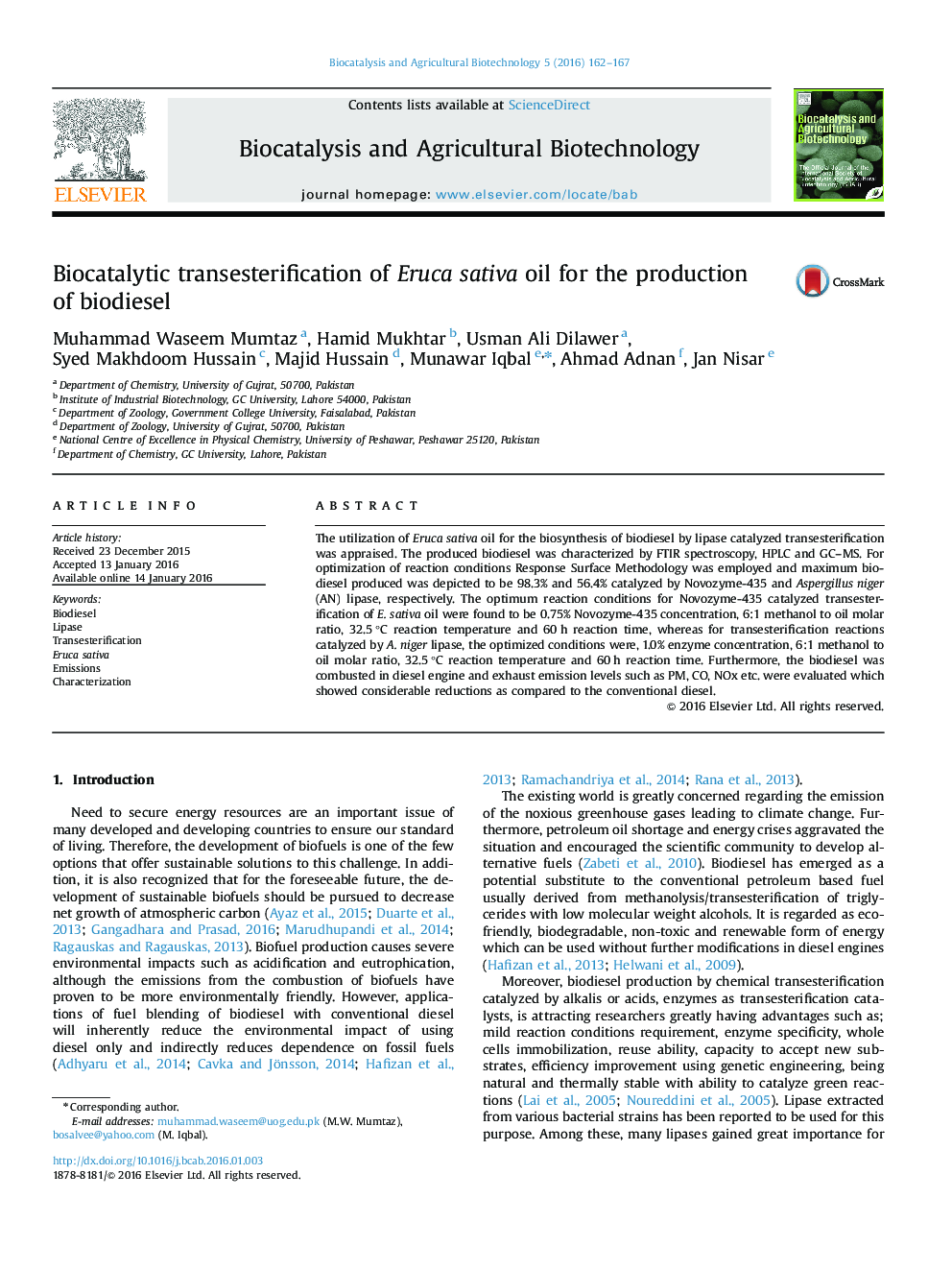| Article ID | Journal | Published Year | Pages | File Type |
|---|---|---|---|---|
| 2075373 | Biocatalysis and Agricultural Biotechnology | 2016 | 6 Pages |
The utilization of Eruca sativa oil for the biosynthesis of biodiesel by lipase catalyzed transesterification was appraised. The produced biodiesel was characterized by FTIR spectroscopy, HPLC and GC–MS. For optimization of reaction conditions Response Surface Methodology was employed and maximum biodiesel produced was depicted to be 98.3% and 56.4% catalyzed by Novozyme-435 and Aspergillus niger (AN) lipase, respectively. The optimum reaction conditions for Novozyme-435 catalyzed transesterification of E. sativa oil were found to be 0.75% Novozyme-435 concentration, 6:1 methanol to oil molar ratio, 32.5 °C reaction temperature and 60 h reaction time, whereas for transesterification reactions catalyzed by A. niger lipase, the optimized conditions were, 1.0% enzyme concentration, 6:1 methanol to oil molar ratio, 32.5 °C reaction temperature and 60 h reaction time. Furthermore, the biodiesel was combusted in diesel engine and exhaust emission levels such as PM, CO, NOx etc. were evaluated which showed considerable reductions as compared to the conventional diesel.
